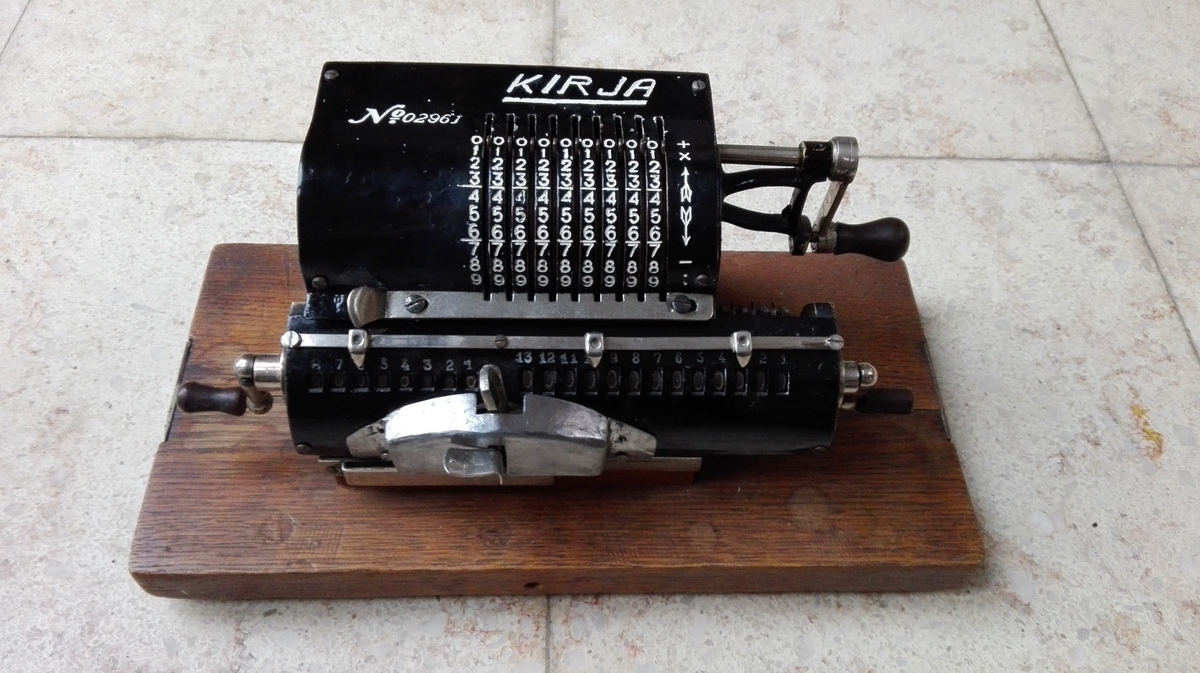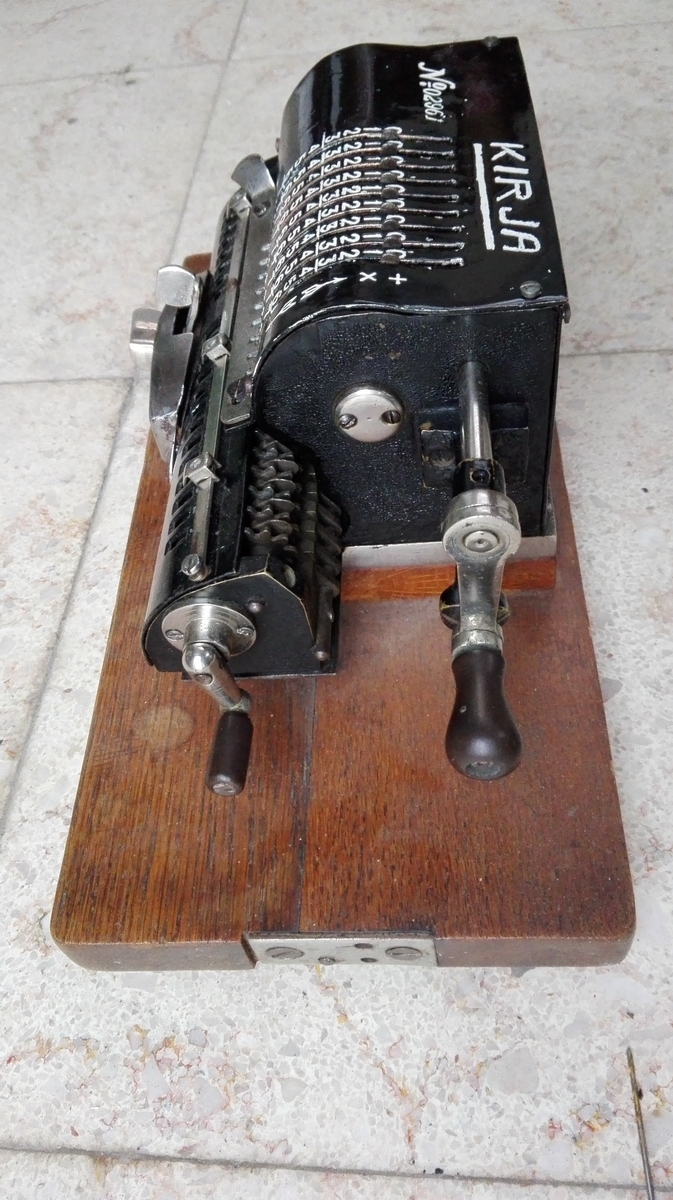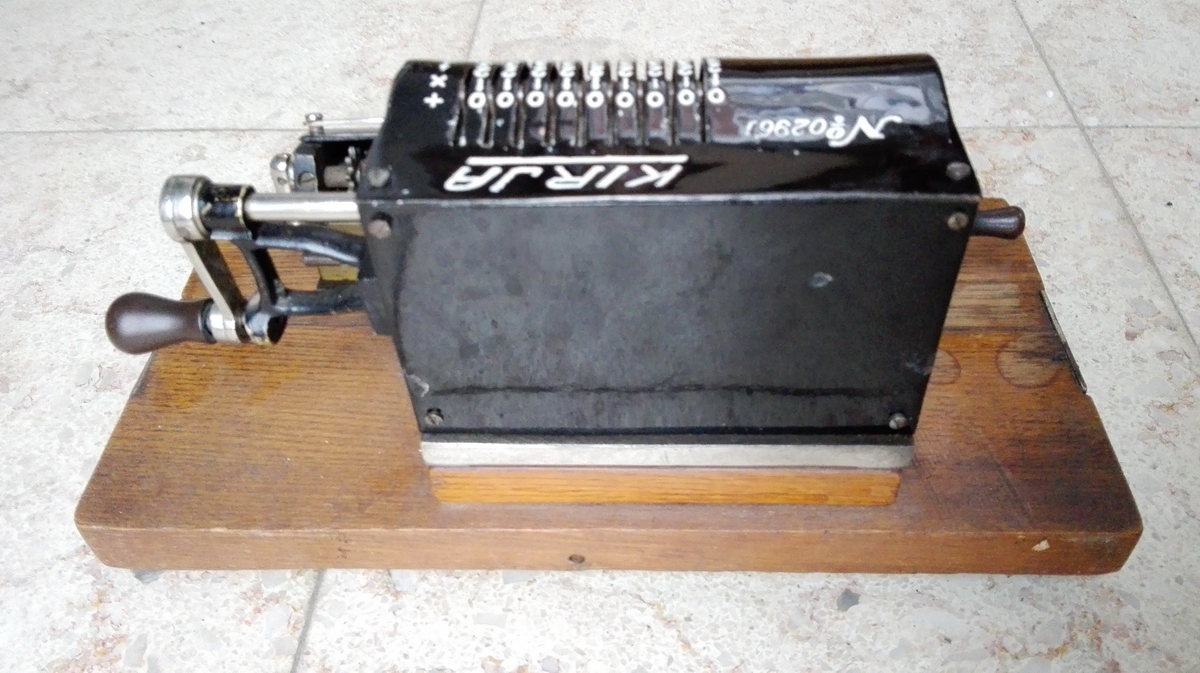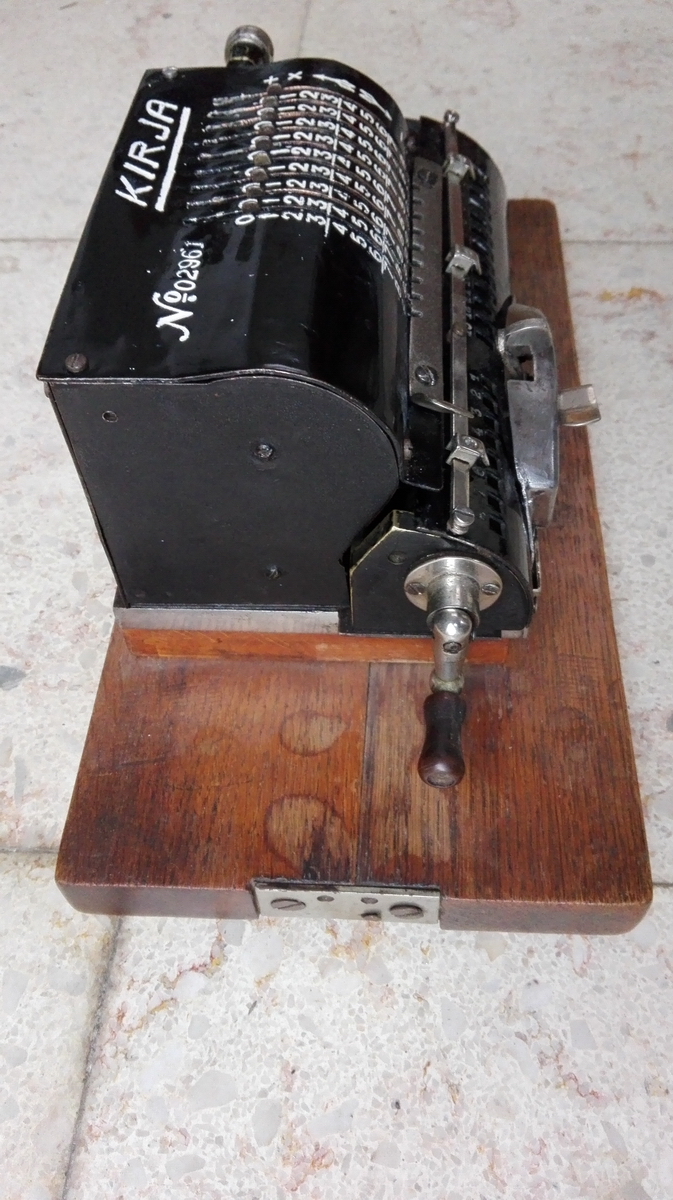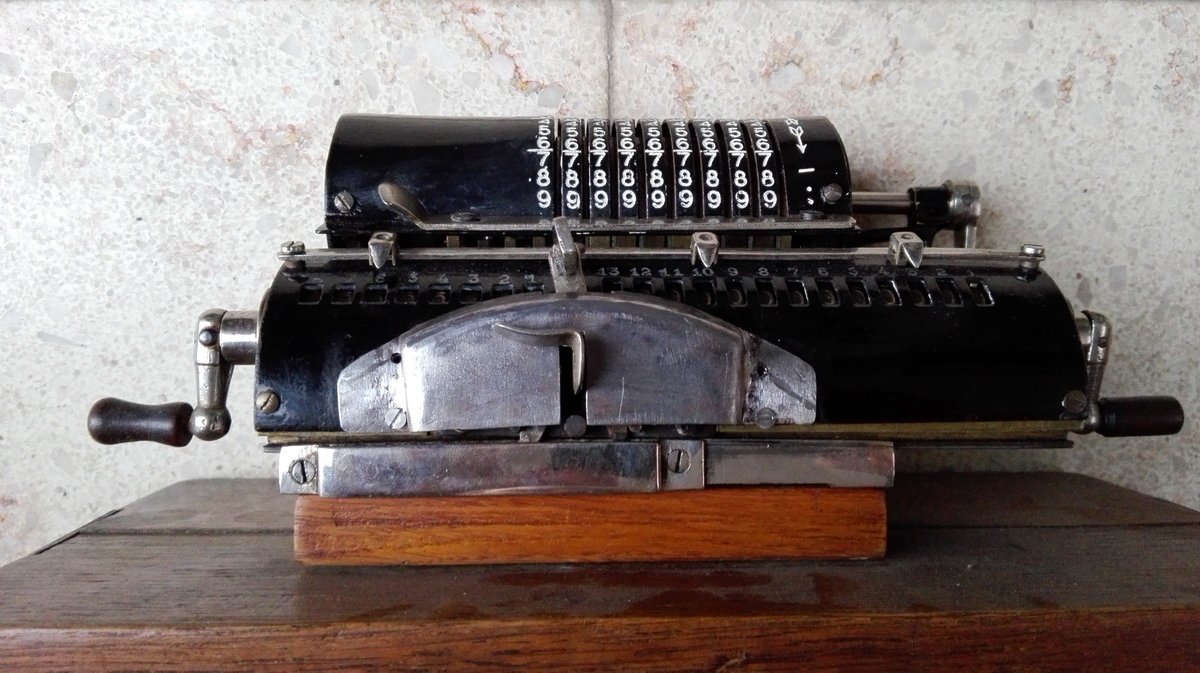Kirja
Now this machine was an interesting restoration. It came to me in a bit of a state.
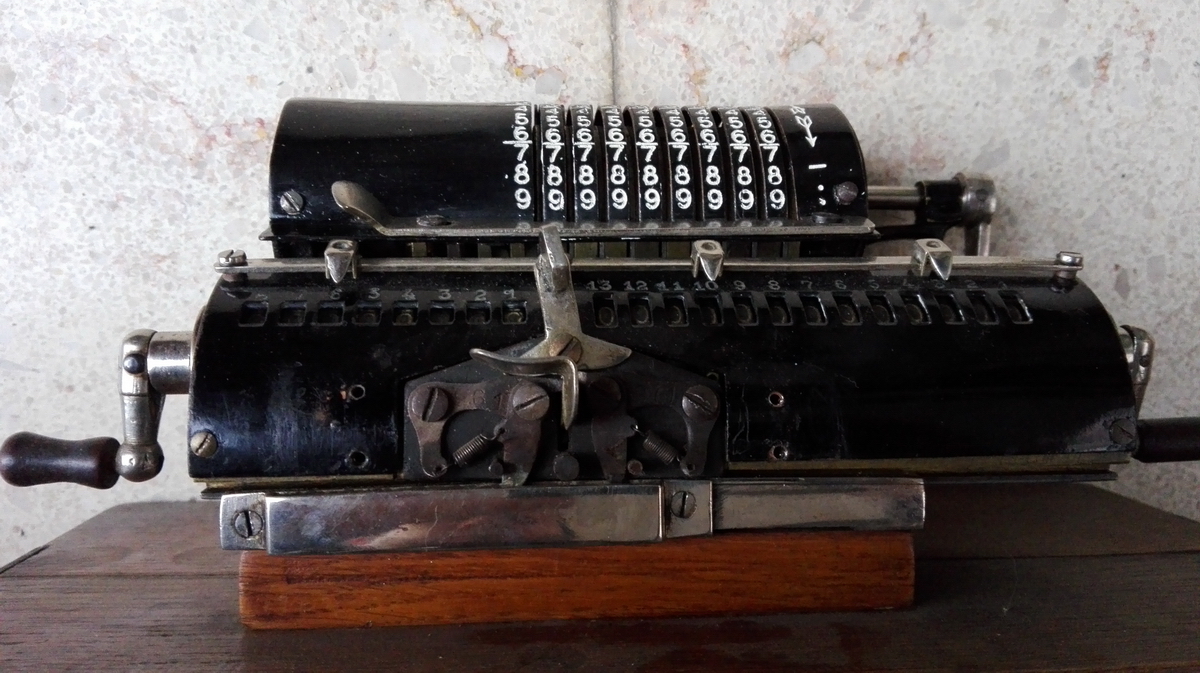
The metal cover on the front was missing, and as it had been sold second-hand, the dealer who sold it, ground out the "Kirja" name on the top cover. The machines were apparently built in Leningrad, by the "Valtion kustannusliike Kirja" - the State Publishing House of Finnish Literature, which was located in Karelia, which used to be part Finnish. Serguei Frolov shows a steel cover of a machine like this, which is labeled "Petroskoi - Leningrad". Petroskoi, or Petrozavodsk as it is called in Russian, is currently the capital of the autonomous Russian republic of Karelia. Back when this calculator was made, between 1932 and 1937, Finnish was one of the official languages of Soviet Karelia - being tolerated in the assumption that the rest of Finland would soon join the USSR. That would explain why its name means "book" in Finnish, and there is normally a decal with a picture of a book on the top plate. It was also produced for the Latvian market, under the "Prometei Portable" name. Latvia was also independent at the time, and not part of the USSR. The link between Petroskoi and Leningrad is sort of clear - the publishing house had a cardboard factory and typewriter and calculator repair shop in Leningrad, mainly the books were published in Petroskoi. The best summary can be found in the computer-museum.ru, compiled by Timo Leipälä.
I made up a template in cardboard, and went off to see a metalworker I know, who has been meticulously building his own aluminium car body for the past five years. If you can do that, you can make a measly cover from a bit of steel too! He saw no issue to beat a steel plate into the required shape, without any apparent effort. For a laugh, try it yourself, and see what happens next ...
When he was finished, all that was left to do for me was solder up the corners and trim the edges so it would fit the calculator, and then drill the holes in it at the proper location for the screws.
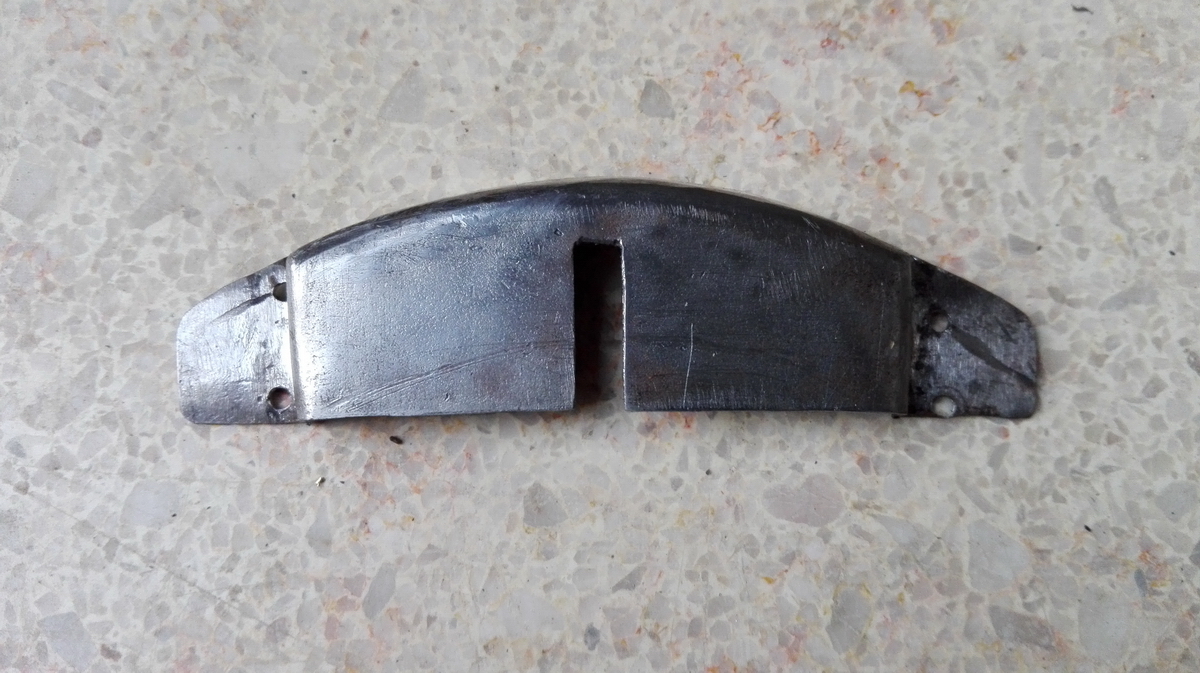
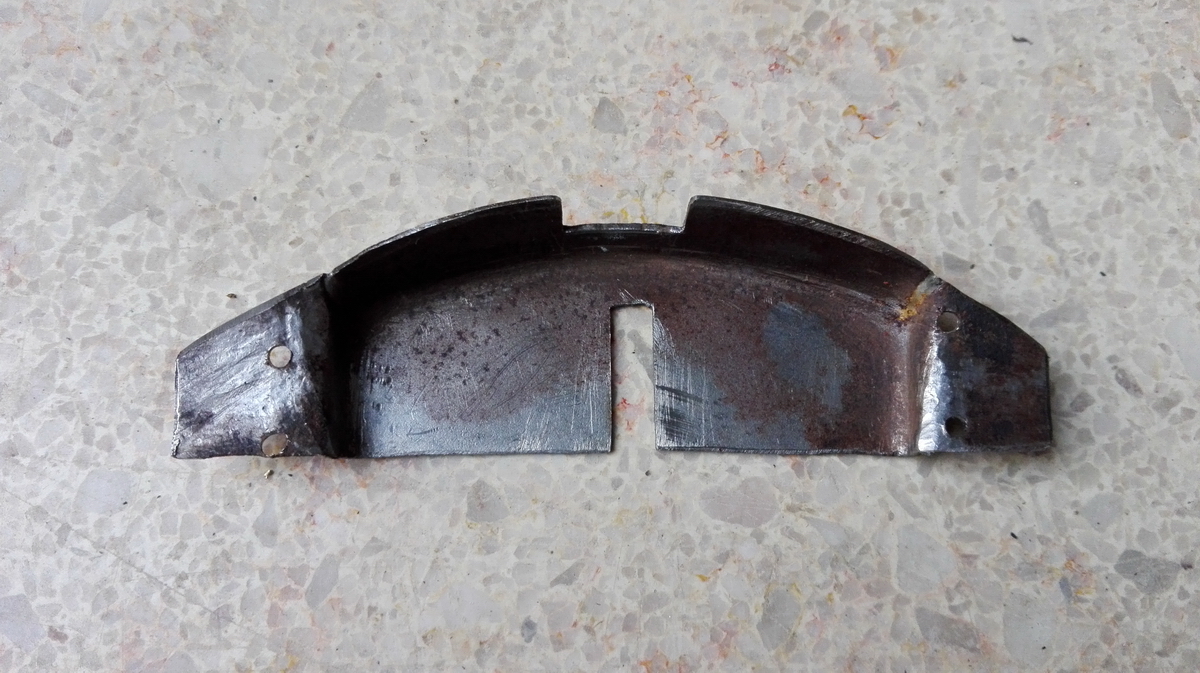
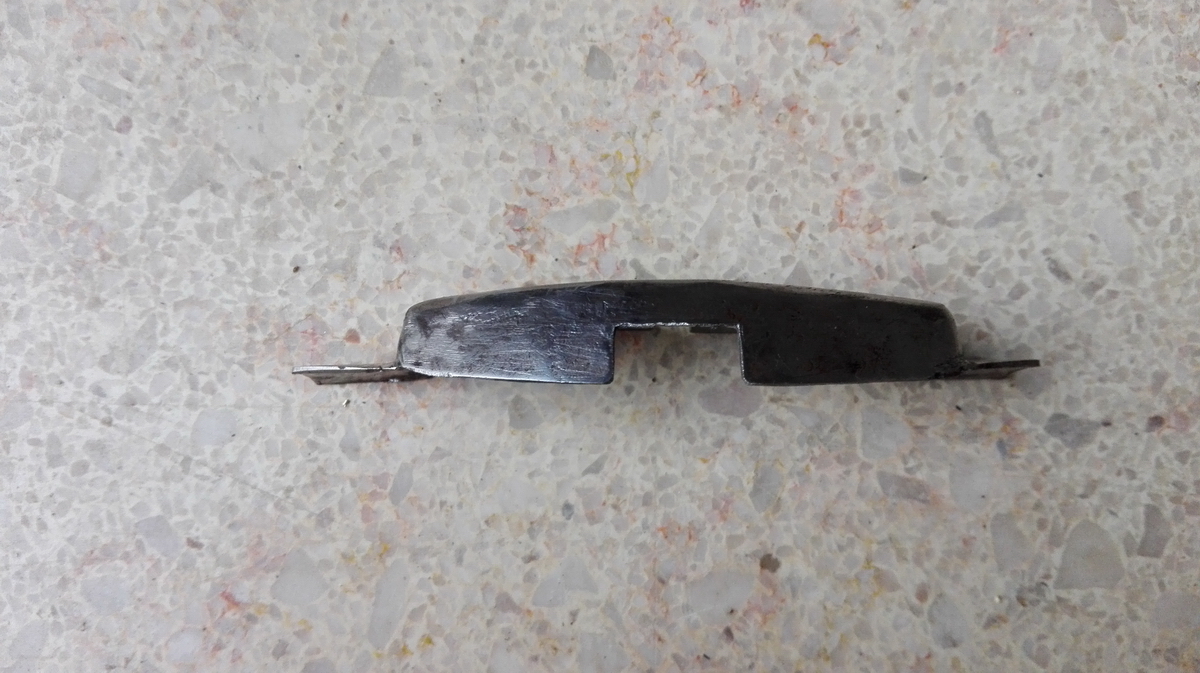
This immediately points to the main problem with the machine - it is Russian, and I have no idea what crazy kind of screw threads they were using, but it is nothing in any case that I would have any screws for. In addition, some of the holes have been enlarged and threaded M3. For fixing the metal cover, I've ended up using M2.5 screws.
The other issue was the ground out "Kirja" text. I decided to replicate it based on pictures, because like the bright steel cover, it is quite characteristic for the machine. I filled up the shallow cavity in the top plate that was left by grinding the text out with car body putty (you have to do that a few times to build it up).
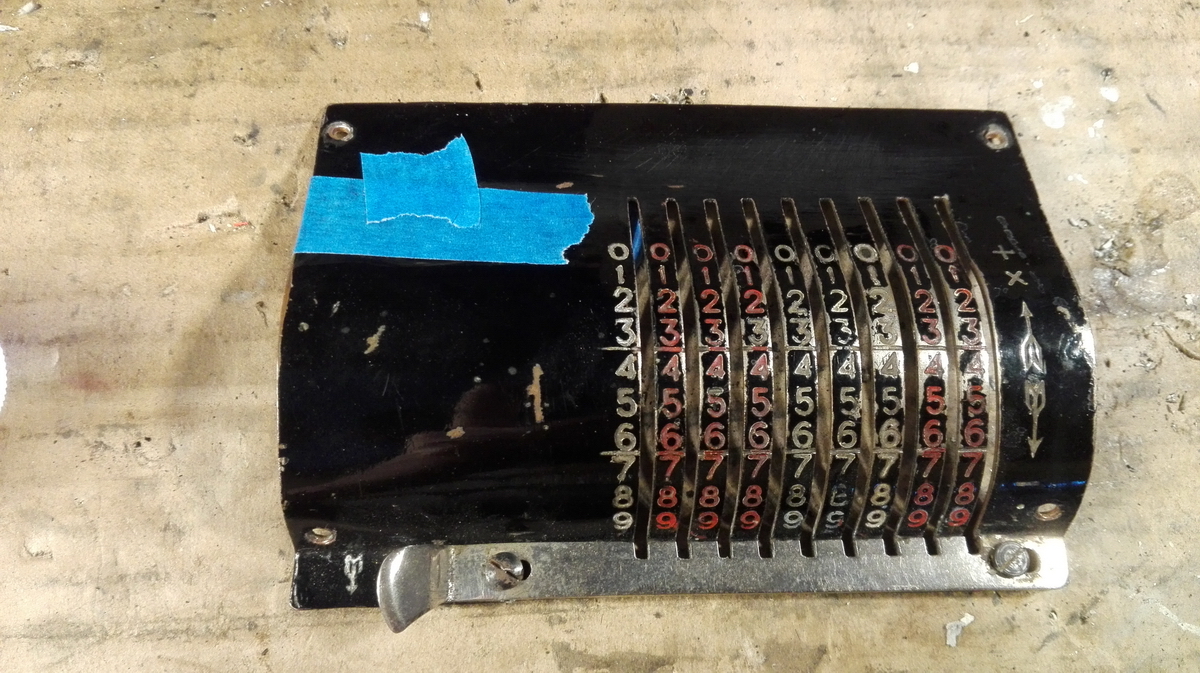
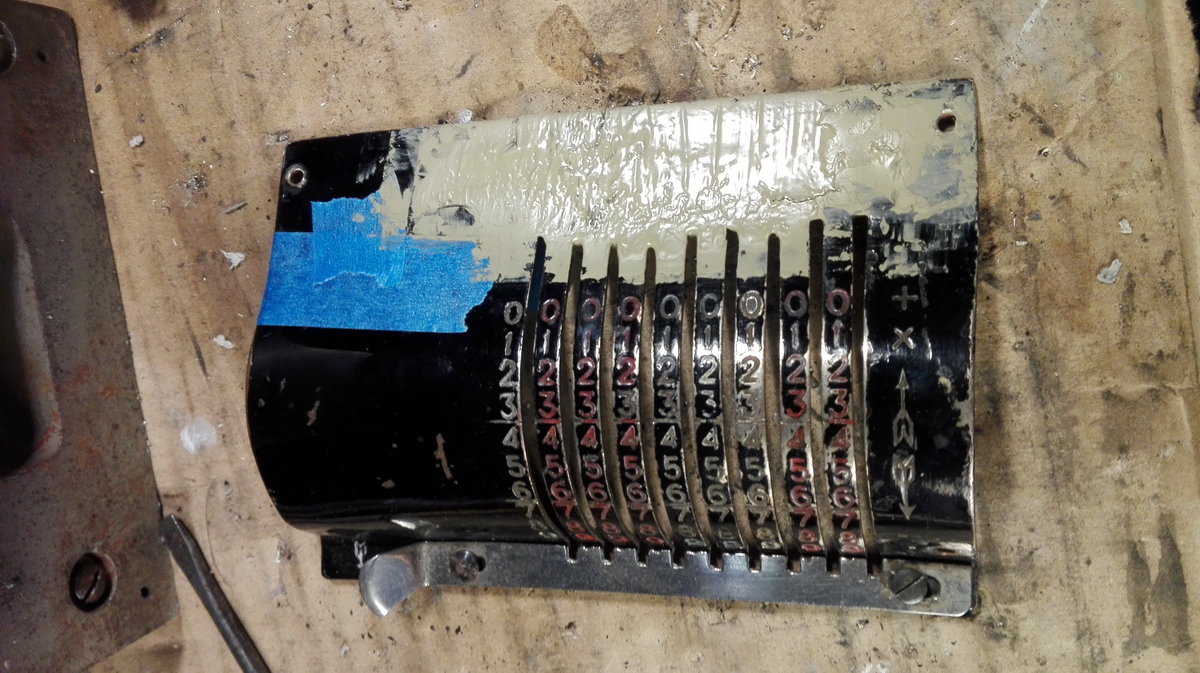
I then sanded it smooth, and drew on the KIRJA script and line.
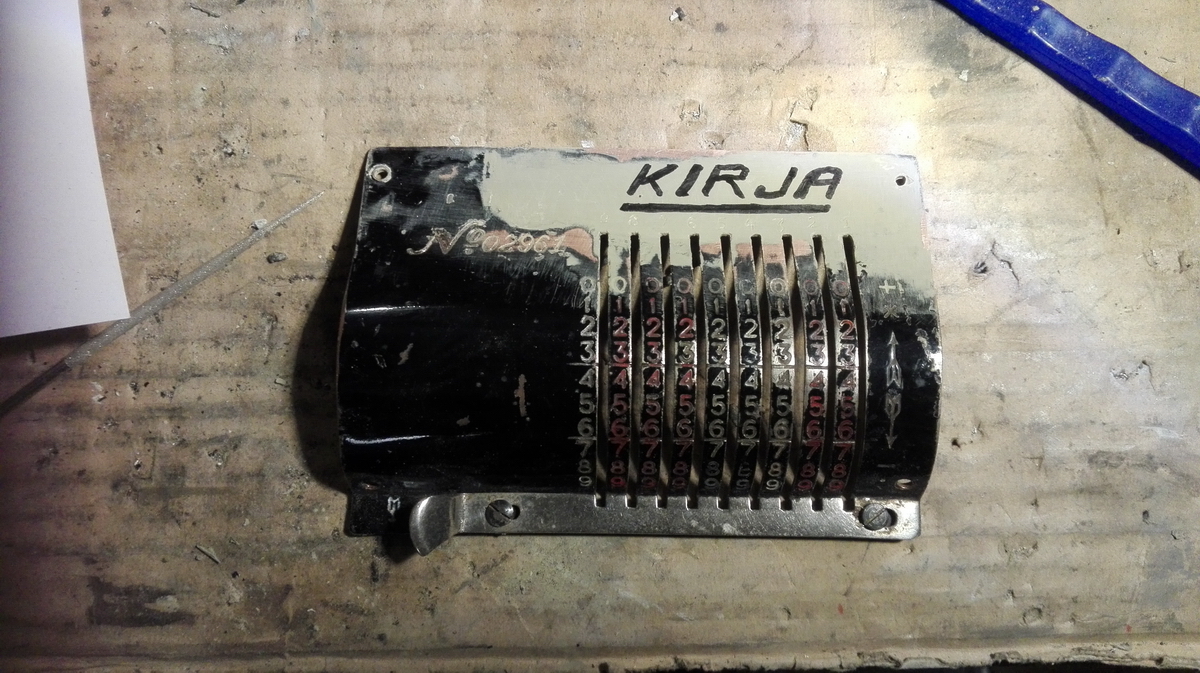
I then use a small round-nose milling cutter in a rotary tool to engrave the text deeply into the hardened putty.
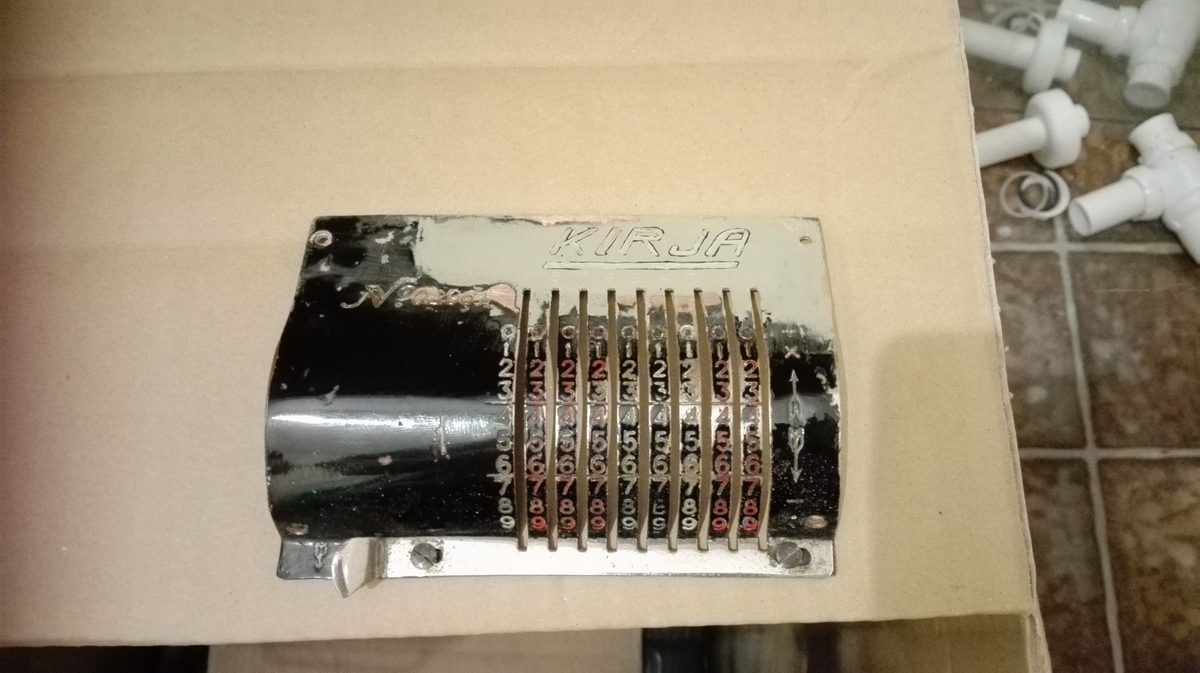
Once this was done, I painted the cover.
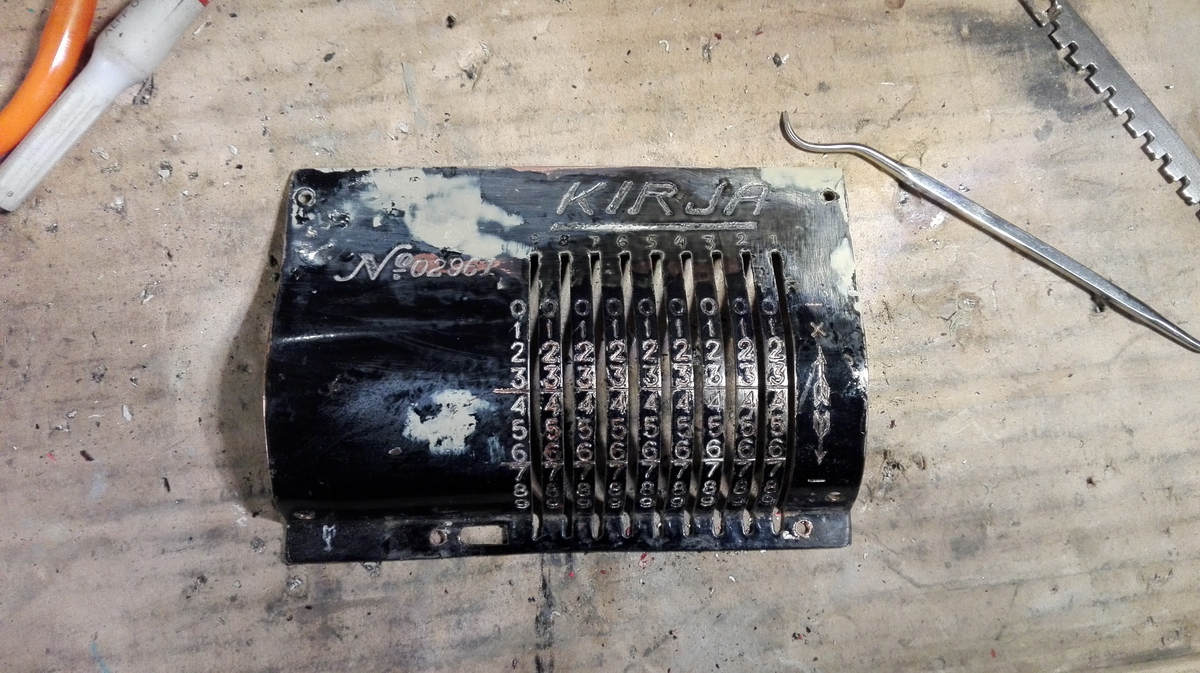
Rinse and repeat to take out any blemishes ...
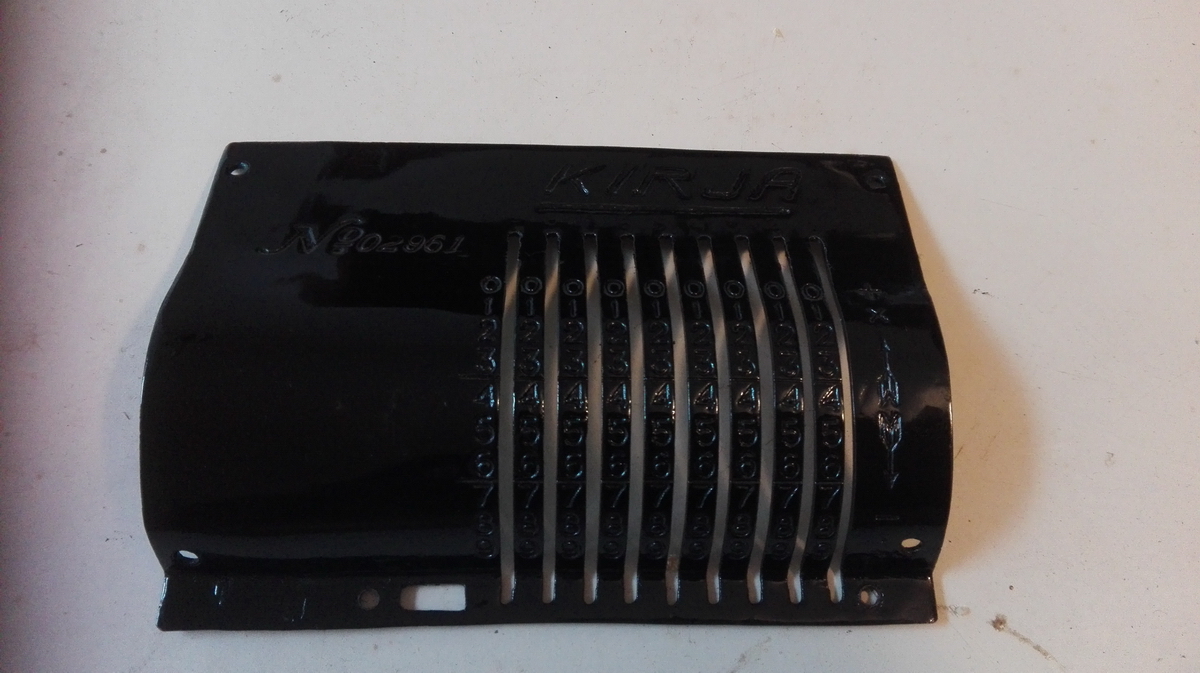
and finally fill in the lettering with white latex paint.
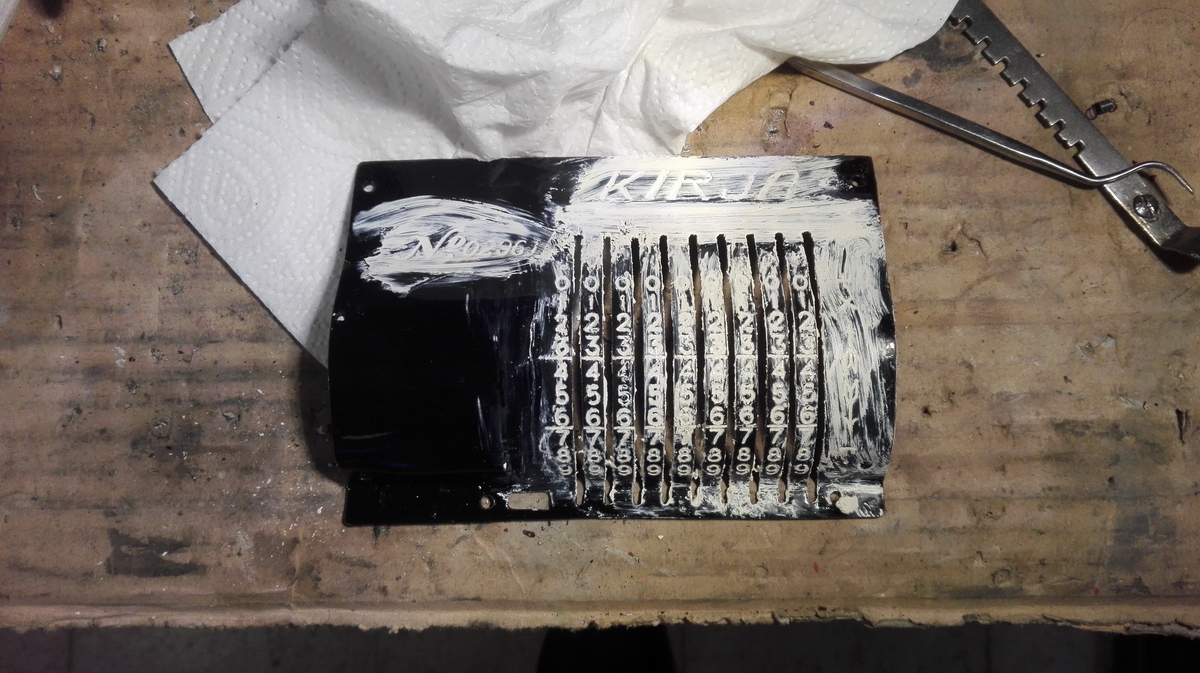
Job done!
With the bright metal cover in place and the engraving present, the machine now looks like a Kirja again. The machine works surprisingly well for being a small production run from post-revolutionary Russia. It has a quite sophisticated feel to it, and it is definitely a kind of machine that you don't see every day.
Some pictures:
